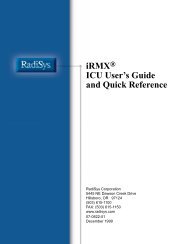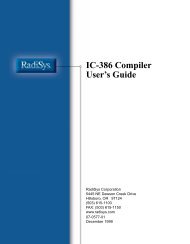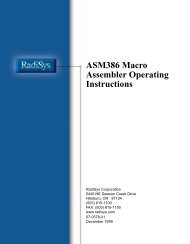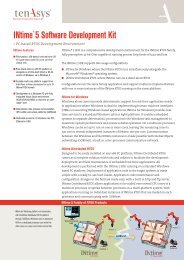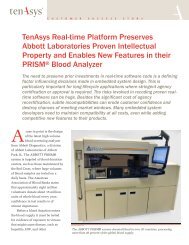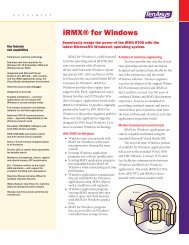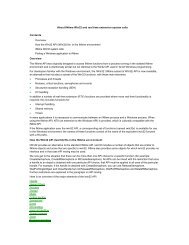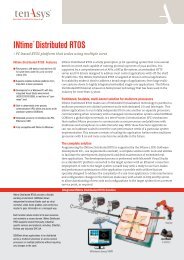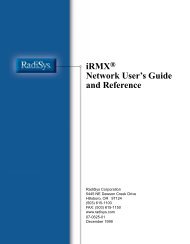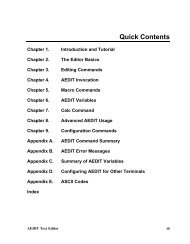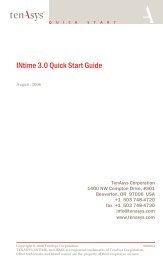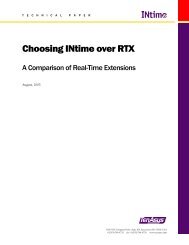INtime® 3.1 Software - tenAsys
INtime® 3.1 Software - tenAsys
INtime® 3.1 Software - tenAsys
You also want an ePaper? Increase the reach of your titles
YUMPU automatically turns print PDFs into web optimized ePapers that Google loves.
Appendix D: INtime software components<br />
RtIf.sys (RT Interface Driver)<br />
A Windows kernel mode device driver that co-manages the OSEM used by the INtime<br />
product to add RT capabilities to Windows. This driver:<br />
• Establishes the initial RT kernel environment.<br />
• Co-manages switching between the Windows and INtime runtime environments.<br />
• Supports communication and synchronization mechanisms between Windows<br />
threads and RT threads by relaying NTX library requests.<br />
Note<br />
For detailed information, see INtime Help. For information about accessing help, see Where to get<br />
more information on page vi.<br />
Item<br />
Pathname<br />
Invocation<br />
Description<br />
C:\windows\system32\drivers\rtif.sys<br />
Windows loads this driver at system initialization time.<br />
RtIOCons.exe (INtime I/O console)<br />
The RT I/O Console is a 32-bit Windows program that provides support for Windows<br />
console I/O for RT threads. It creates and manages a single console window and<br />
executes keyboard data (input) requests and display (output) requests from the RT<br />
thread.<br />
Item<br />
Pathname<br />
Invocation<br />
Description<br />
C:\Program Files\INtime\bin\rtiocons.exe<br />
Invoked by RtIOSrv.exe (INtime I/O Service)<br />
RtIOSrv.exe (INtime I/O Service)<br />
A 32-bit Windows program that provides Windows file system and console I/O support<br />
for RT threads. This program acts as a server to RT “C” library to obtain a console<br />
window for display (via printf) of application data and to receive (via scanf) user input<br />
from the system keyboard.<br />
When the RT “C” library receives an stdio request from a real-time thread, it checks to<br />
see if a console exists. If a console exists, it relays the request to the appropriate RT I/O<br />
console If no console exists, it blocks the thread making the request, creates an RT I/O<br />
console window for the thread via the INtime I/O Service, and relays the request to the<br />
RT I/O console. When a request completes, the INtime I/O Service unblocks the<br />
corresponding thread and relays the reply. If Windows terminates execution, the RT<br />
I/O Console terminates all pending requests with an E_EXIST error.<br />
169



